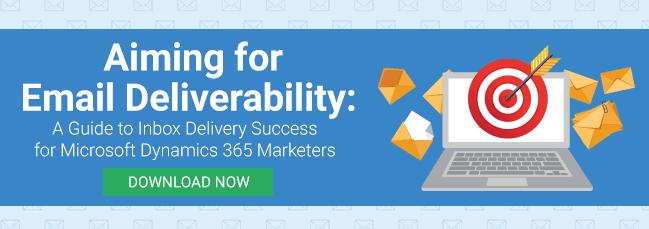The most important aspect of email deliverability is list quality. We are not just talking about making sure that the email addresses on your marketing list exist but also that your recipients want your emails and are actively engaging with them. The definition of “spam” has changed. It is not only pure junk mail anymore, it’s any mail that the recipient perceives as unwanted – even if they signed up for it.
Spam trap email addresses are not a singular cause of poor list quality but are indicative of a much larger issue.
What is a Spam Trap?
First, let’s talk about the definition of a spam trap email address. Spam traps are email addresses that are not currently owned by a human; think of them more like data feeds. They do not sign themselves up for any emails and they do not engage with email (they won’t open, click, unsubscribe) but they will accept email (you will get a successful email delivery). Spam traps can be owned by a blacklist, an ISP or spam filter, or a sensor-network, where they are used for reporting purposes only. The spam traps owned by blacklists and ISPs are used to collect data about the email sender and contribute to sender reputation measurement. The spam traps used in sensor-networks don’t provide data for a sender’s reputation but are there for reporting purposes, so the sender can identify the issue.
There are three main types of spam traps:
- Pristine: These addresses have never been owned by a human; they were created originally to be a spam trap address. They have never signed up for any email.
- Recycled: These addresses originally belonged to a human before they became inactive. The email address returned an Invalid Recipient bounce for a while and then was converted to a spam trap address.
- Typo: These addresses are to typo domains such as yahooo.com or gnail.com. Spam trap networks purchase the commonly misspelled domain and allow them to accept mail.
How Spam Traps Get on Your Lists
There are a few ways that spam traps get on a marketing list:
- Manually added email addresses without direct permission from the owner.
- Sign up forms that don’t use Captcha and don’t use confirmed opt-in. Often, spam bots will attack a form and inject a large number of problematic email addresses.
- Purchased lists – they are always a bad idea and against the ClickDimensions terms of service.
- Old addresses that someone “found.” If they haven’t been sent to for six months or longer, it’s problematic to start sending to them again out of the blue.
The Impact of Spam Traps
What is the impact of sending to spam trap addresses? Blacklisting and a hit to your sender reputation for starters. Blacklists often use spam traps to identify potential spammers. If you send email to their spam trap addresses, they will list the IP address that was used to send the email. If you send to spam trap addresses owned by ISPs, they will use this information to calculate your sender reputation and it can impact the delivery of email.
It’s also important to note that the email deliverability team at ClickDimensions investigates all IP blacklistings to identify the sender. Multiple blacklistings can result in a suspended account.
How to Avoid Spam Traps
If a sender has spam traps in their lists, it’s usually not the only list quality issue that they have. We use spam traps as an indicator of general acquisition or list maintenance problems. It’s easier to avoid spam traps in the first place than to get rid of them later. You can avoid them by using permission-based marketing, which means acquiring permission to email an address directly from the owner. Confirmed or double opt-ins can help with this or you can identify ownership of the email addresses in other ways. But once you have an email address in your list, the process does not stop there. Regular maintenance is required.
If you are emailing current customers, have them verify their email address occasionally and confirm their subscription preferences. The best senders will also purge their lists of unengaged subscribers once or twice a year. As an example, if you have been sending to an email address twice a month for six months and they have never opened or clicked, it’s time to let them go. Your unengaged subscribers are more likely to mark an email as spam or to be a spam trap.
The same steps that you take to avoid and/or get rid of spam trap addresses will improve the health of your data as a whole. A cleaner list means that you will be sending to recipients that want your email and interact with it. The interaction boosts your reputation and allows you to get to the inbox more often. It’s a win-win.










Leave A Comment